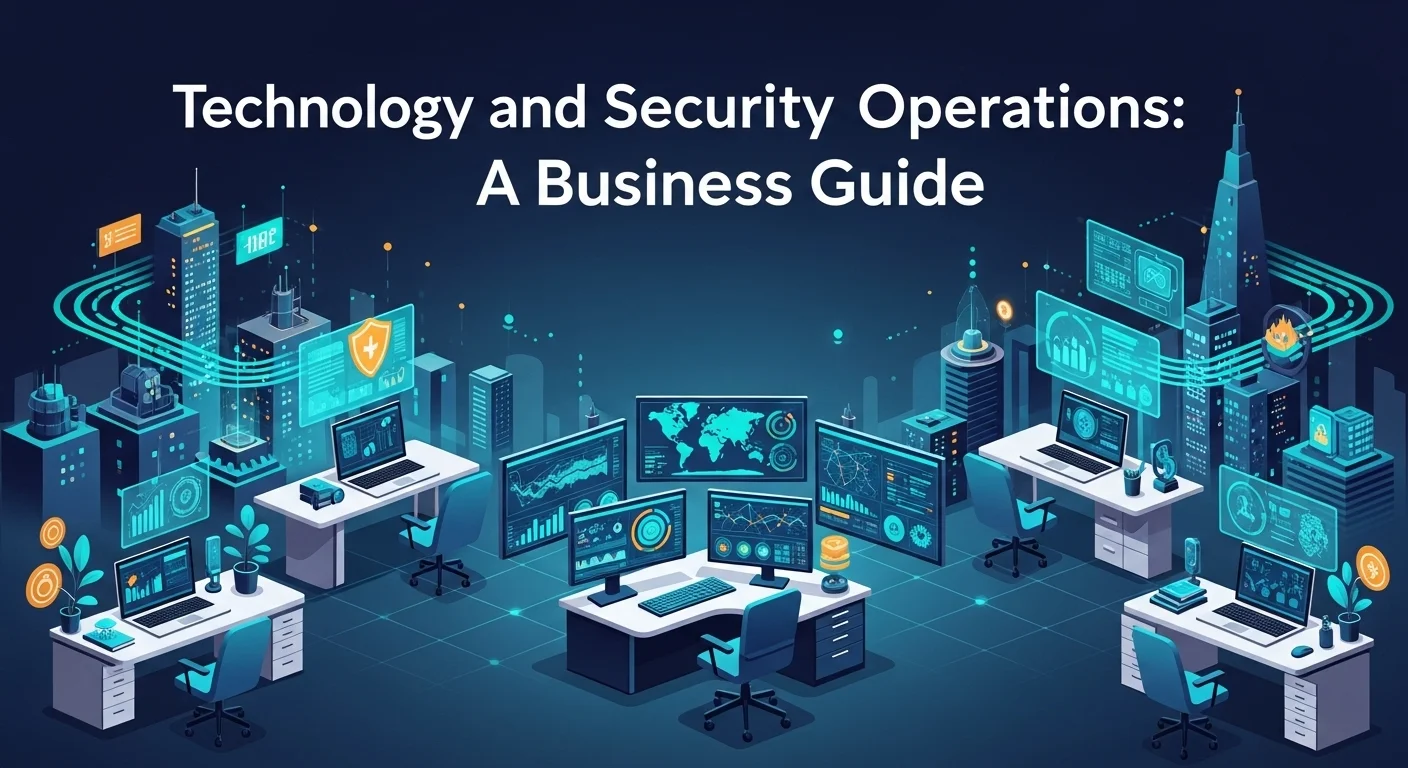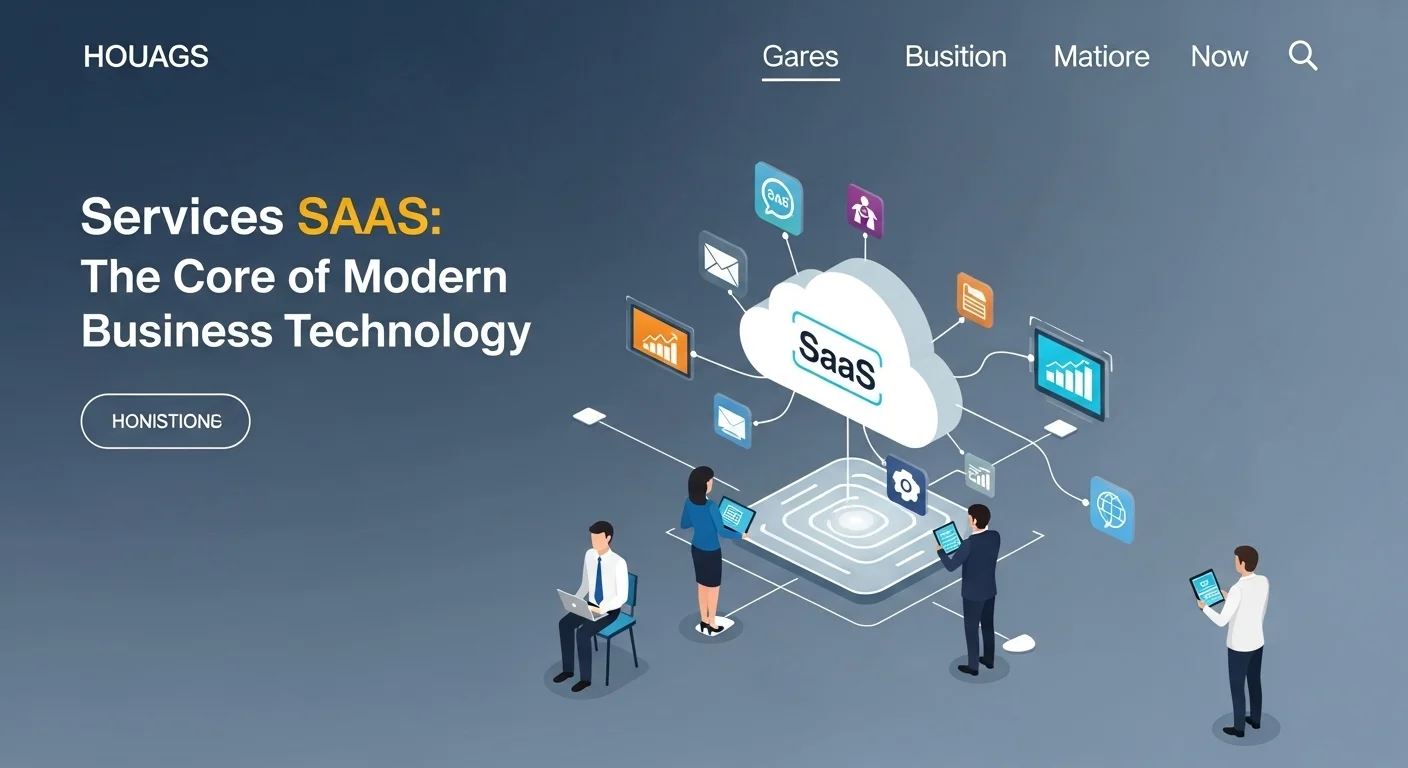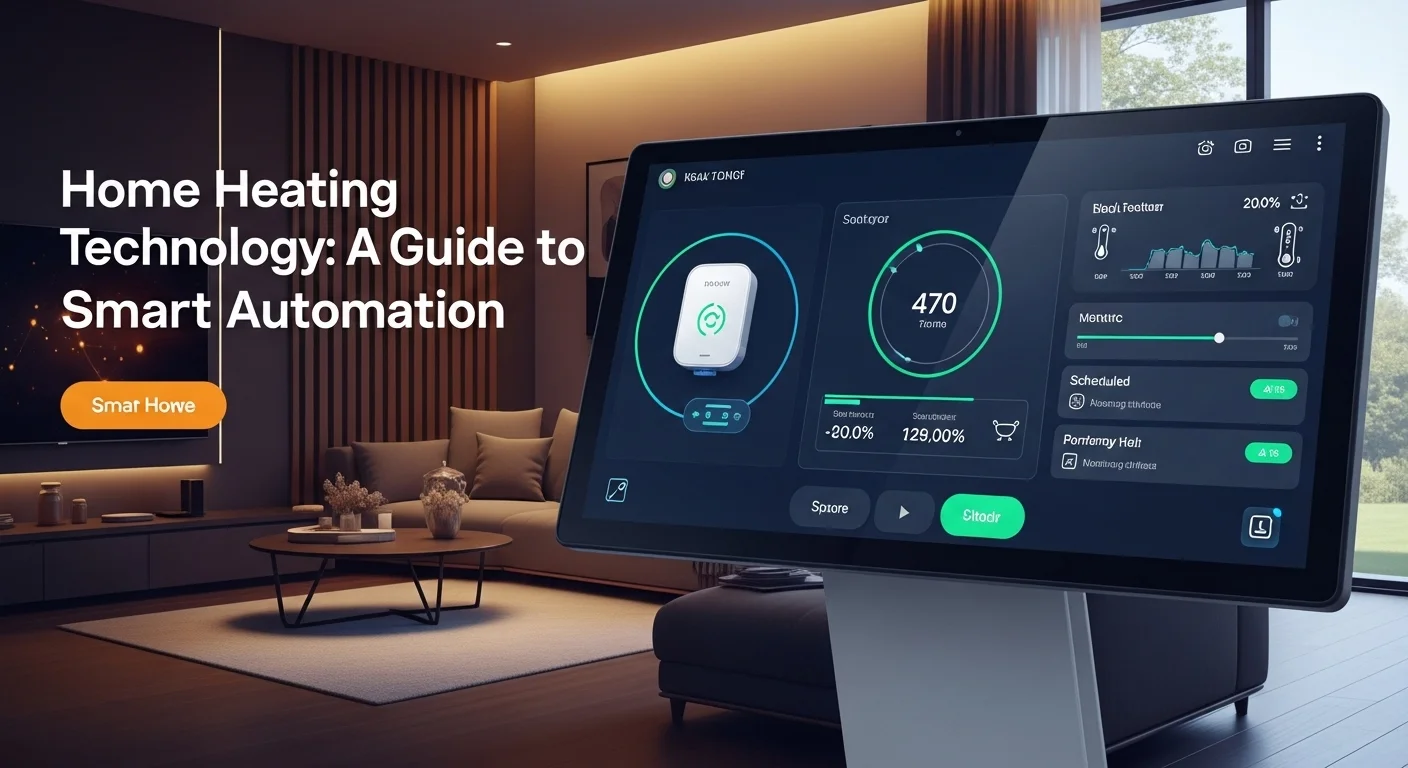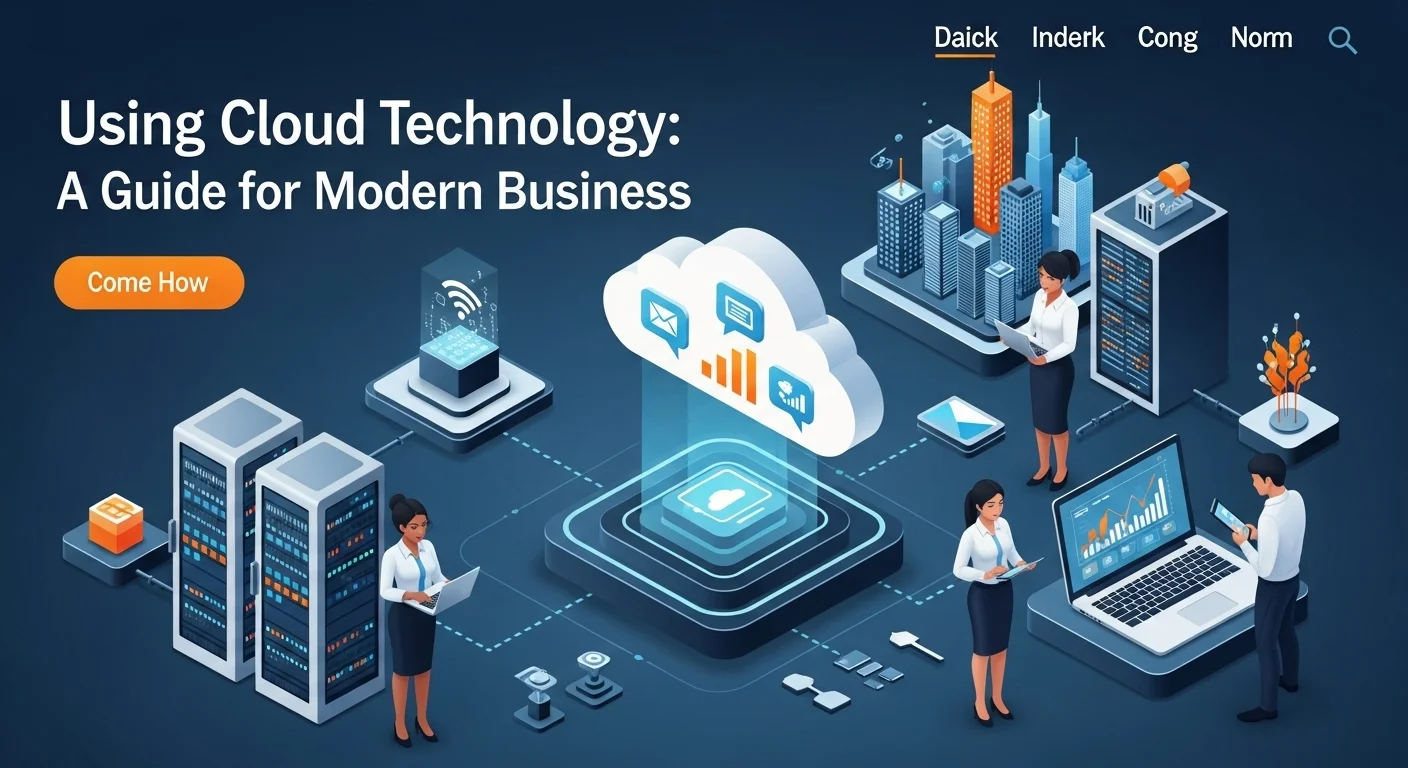Your Guide to Security Operations: How to Protect Your Business from Modern Threats

Executive Summary
I’ve been in the cybersecurity trenches for over 15 years, and if there’s one thing I’ve learned, it’s that a solid Security Operations (SecOps) plan isn’t just for big corporations anymore. It’s essential for survival. In a world where every business relies on technology, understanding how to protect your digital assets is non-negotiable. This guide is my attempt to cut through the noise and give you a straight-talking overview of SecOps. We’ll explore what a Security Operations Center (SOC) really does, discuss whether you should build your own or hire a managed service, and look at the tools that power modern cyber defense. My goal is to equip you with the knowledge to make informed decisions and build a resilient security posture that protects your operations, your data, and your customers' trust.
Table of Contents
Table of Contents
- What is Security Operations and Why Does It Matter?
- The Core Pillars of a Strong Security Strategy
- SecOps for Your Business: In-House vs. Managed Services
- The Technology Powering a Modern SOC
- Tips for a Proactive Cyber Defense
- How to Measure and Improve Your Security
What is Security Operations and Why Does It Matter?
In my early days in IT, security was often an afterthought—a firewall here, an antivirus program there. Today, that approach is a recipe for disaster. Security Operations, or SecOps, is the complete shift from that old mindset. Think of it as the dedicated, 24/7 neighborhood watch for your entire digital world. It’s not just about technology; it's a living, breathing function that combines skilled people, smart processes, and powerful tools to constantly watch for, analyze, and respond to cyber threats. The goal is simple: to protect everything that makes your business tick, from customer credit card numbers and secret product designs to the very systems that handle your payroll. In today's hyper-connected environment, a single breach can cause crippling financial loss, shatter your reputation, and bring your operations to a grinding halt. That's why solid SecOps isn't a luxury; it's fundamental.
The heart of this entire operation is the Security Operations Center (SOC). I've spent countless hours in SOCs, and I can tell you, it's the command center where the real action happens. It's a centralized hub where a team of security analysts uses a suite of advanced tools to keep an eye on the company’s entire IT landscape—servers, laptops, cloud services, you name it. This isn't a nine-to-five job, because attackers certainly don't keep business hours. The SOC team is there around the clock, sifting through alerts, investigating anything that looks suspicious, and launching a rapid, coordinated response to shut down threats before they can do real damage. It’s a proactive game of cat and mouse, moving far beyond simply cleaning up a mess after you've been hacked. It's about finding the mouse before it ever gets to the cheese.
The Core Pillars of a Strong Security Strategy
To really get what SecOps is all about, it helps to think of it in terms of the five core functions, which many of us in the industry align with the NIST Cybersecurity Framework. It’s a commonsense approach that just works:
- Identify: You can't protect what you don't know you have. This first step is all about creating a complete inventory of all your digital assets—every laptop, server, and piece of software. It’s the foundation for understanding your unique risks.
- Protect: This is where you build your fences. It involves implementing safeguards like strong access controls (who can get into what), data encryption, and, crucially, training your employees to spot phishing emails. The best incident is the one that never happens.
- Detect: This is the 24/7 monitoring I mentioned. Using tools that act like super-powered smoke detectors, analysts look for signs of trouble across the network. They’re trained to spot the faint signals that might indicate a sophisticated attack in progress.
- Respond: When the alarm bell rings, you need a plan. This is about having a clear, step-by-step process to contain the threat, kick the intruder out, and get things back under control as quickly and calmly as possible.
- Recover: After the dust settles, the work isn't over. This final phase is about restoring any services that were disrupted and, most importantly, learning from the incident to make your defenses even stronger for next time.
Within this framework, we often talk about network security operations and information security operations. Think of network security as protecting the roads and highways of your digital city—managing firewalls and securing connections to prevent bad guys from getting in or moving around. Information security, on the other hand, is about protecting the valuable cargo traveling on those roads—the data itself. It involves classifying sensitive information and using tools to prevent it from being stolen. The two are inseparable; you need secure roads to protect your valuable cargo.
SecOps for Your Business: In-House vs. Managed Services
For any business leader, putting a solid SecOps function in place is one of the smartest strategic moves you can make. It's not about spending money; it's about investing in resilience. The benefits are crystal clear: you lower your risk of a costly data breach, build trust with your customers, meet compliance requirements like GDPR or HIPAA, and ensure you can stay in business even when faced with an attack. A successful cyberattack can be an extinction-level event for a small business, so this is a crucial investment.
But let's be realistic: building your own SOC from scratch is a massive challenge. It's expensive, and finding, hiring, and keeping top-tier cybersecurity talent is incredibly difficult. That’s why the managed security operations center (MSOC) model, often called SOC-as-a-Service, has become so popular, especially for small and mid-sized businesses. An MSOC is essentially your outsourced, expert security team. For a predictable monthly fee, you get access to their people, technology, and processes. This model levels the playing field, giving smaller companies access to the kind of enterprise-grade security that was once out of reach. It allows business owners to focus on what they do best, knowing a team of experts is watching their back around the clock. Deciding between building in-house or partnering with an MSOC is a major decision, but for many, it’s the most practical and cost-effective way to achieve a truly professional security posture.

Complete guide to Security Operations in Technology and Business Solutions
Diving deeper into Security Operations (SecOps), we find a world driven by powerful technology and critical business decisions. The strength of any cyber defense plan depends on its tech stack, its methods, and the sharp minds tying it all together. Let’s break down the essential tools and business models that form the backbone of a modern SecOps framework.
The Technology Powering a Modern SOC
At the core of every Security Operations Center (SOC) is a toolkit designed to see everything, automate the grunt work, and enable lightning-fast responses. Here are the key players:
- Security Information and Event Management (SIEM): Think of a SIEM as your security command center's main screen. It pulls in log data from everywhere—servers, firewalls, applications, you name it. It then pieces all this information together, looking for patterns or suspicious activities that might signal an attack. When it finds something, it raises an alert for an analyst to investigate.
- Security Orchestration, Automation, and Response (SOAR): As you can imagine, a SIEM can generate a lot of alerts. It quickly became impossible for humans to check every single one. That's where SOAR comes in. It's like a brilliant assistant for your security team. It automates the routine, time-consuming tasks. For instance, when an alert for a phishing email comes in, a SOAR 'playbook' can automatically check the sender's reputation, scan the attachment for malware, and if it's malicious, block the sender across the entire company—all before an analyst even has their morning coffee. This frees up the human experts to focus on the truly complex threats.
- Endpoint Detection and Response (EDR) / Extended Detection and Response (XDR): Your traditional antivirus is like a bouncer checking IDs at the door. EDR is like having a security guard inside who constantly patrols, watching for suspicious behavior on every device (laptops, servers, etc.). XDR is the next evolution. It takes that EDR capability and extends it to see what's happening across your network, cloud, and email systems, connecting the dots to give you a full picture of an attack.
- Threat Intelligence Platforms (TIPs): A TIP is your connection to the global cybersecurity community. It constantly feeds your security tools with up-to-the-minute information about new malware, hacker groups, and their favorite attack methods. This intel gives your team crucial context. Instead of just seeing a weird file, they know it’s a tool used by a group known to target companies in your industry.
- Network Detection and Response (NDR): While EDR watches your devices, NDR watches the traffic flowing between them. It’s fantastic at spotting an attacker who has already slipped past the perimeter and is trying to move laterally through your network to find valuable data. Effective network security operations need this kind of visibility to catch intruders in the act.
Business Solutions: In-House SOC vs. Managed Security Operations Centre (MSOC)
One of the biggest forks in the road for any company is deciding how to staff their security operations. You can either build your own team or partner with an expert provider.
Building Your Own In-House SOC
Having an in-house team gives you ultimate control. Your security pros become deeply familiar with your business, its unique risks, and its culture. This can lead to a perfectly tailored defense. The downside? It's a huge undertaking. You need to buy all the expensive tech, but more importantly, you have to compete in a fierce market for a very small pool of cybersecurity experts. To run a true 24/7 operation, you'll need at least 8-12 full-time analysts, which is a massive financial commitment that's out of reach for most companies.
Partnering with a Managed Security Operations Centre (MSOC)
For most businesses, an MSOC, or SOC-as-a-Service, is the more practical answer. You're essentially hiring a world-class security team that comes with its own advanced technology and round-the-clock staffing. It turns a massive capital investment into a manageable monthly operational cost. The benefits are compelling:
- Cost-Effective: You avoid the staggering costs of hiring a specialized team and buying six- or seven-figure security tools.
- Instant Expertise: You get immediate access to a large team of specialists, from threat hunters to forensic investigators, that you could never afford to hire on your own.
- 24/7 Peace of Mind: Achieving true 24/7 monitoring is one of the hardest parts of running a SOC. With an MSOC, it's included from day one.
- Scalability: As your business grows, your security services can easily scale with you.
- Shared Intelligence: This is a huge one. MSOCs see attacks across hundreds or thousands of clients. When they spot a new threat targeting one client, they can instantly protect all their other clients from it.
The trade-off is that you cede some direct control. However, for the vast majority of businesses, the immense benefits of a managed security operations centre make it the smartest and most effective path to a mature cyber defense.
Resources and Frameworks
Great SecOps isn't just about good people and good tools; it's about following a proven recipe. Frameworks like the NIST Cybersecurity Framework (Identify, Protect, Detect, Respond, Recover) provide a logical structure for all security activities. Another game-changer has been the MITRE ATT&CK framework. It's a massive, free encyclopedia of hacker tactics and techniques. My team and I use it constantly to understand how attackers think, simulate their methods, and make sure our defenses can spot their real-world behaviors. Using these frameworks ensures your entire security strategy is structured, comprehensive, and focused on stopping actual threats.

Tips and Strategies for Security Operations to Improve Your Technology Experience
Mastering Security Operations is a marathon, not a sprint. The bad guys are always getting smarter, so we have to as well. To stay ahead, your organization needs a culture of constant improvement. Here are some practical tips and strategies I've learned over the years to strengthen your cyber security operations and build a truly resilient defense.
Adopt a Proactive, Threat-Informed Defense
The biggest change I’ve seen in my career is the shift from just reacting to alarms to actively hunting for trouble. It's the difference between being the firefighter and being the fire marshal.
- Become a Threat Hunter: Don't just wait for an automated alert. Threat hunting is where a skilled analyst says, 'I have a hunch that an attacker might be hiding on our network using a specific technique I just read about.' They then use their tools to proactively search for clues. This is how you find sophisticated attackers who are skilled at staying quiet. It drastically cuts down the time an attacker can spend inside your network, which we call 'dwell time'.
- Live and Breathe the MITRE ATT&CK Framework: This isn't just a document to read; it's a tool to use. Map your current security tools and detection rules against the ATT&CK matrix. You'll quickly see your blind spots. It's a roadmap that tells you exactly where you need to improve your visibility to catch known attacker behaviors. We regularly use it to run drills, simulating a specific attack technique to see if our team and tools can catch it.
- Use High-Quality Threat Intelligence: All threat data is not created equal. A list of 10,000 malicious IP addresses isn't very helpful. What you need is contextual intelligence. Who is attacking companies like yours? What tools are they using? What are they after? This kind of focused intelligence helps your information security operations team zero in on the threats that pose a real danger to your business.
Embrace Automation and Orchestration
The sheer volume of security alerts today can easily drown even a large team. Automation isn't about replacing people; it's about empowering them to work smarter.
- Make Your SOAR Platform Your Best Friend: A Security Orchestration, Automation, and Response (SOAR) tool is a massive force multiplier. Use it to build automated playbooks for your most common incidents, like investigating a phishing email or containing a malware infection. By automating the first few steps of every investigation, you can slash response times and free up your analysts from tedious, repetitive work, allowing them to focus on the truly critical thinking and decision-making.
- Automate Your Vulnerability Management: It’s a simple truth: attackers love to use the front door. Unpatched vulnerabilities are the easiest way in. Use automated tools to constantly scan your systems for weaknesses and integrate them with your IT team's ticketing system to make sure patches get applied quickly. This is a core part of any information security operations strategy that locks the doors before the burglars even get to your street.
How to Measure and Improve Your Security
You can't get better if you don't know where you stand. Tracking the right metrics is key to understanding how effective your SOC is and proving its value to the business.
- Track What Really Matters: Forget vanity metrics. The two numbers that count are Mean Time to Detect (MTTD) and Mean Time to Respond (MTTR). In plain English: How fast can you spot trouble, and how fast can you fix it? The goal is to get both of these numbers as low as possible. These metrics tell the real story of your SOC's effectiveness.
- Drill, Drill, Drill: An incident response plan that just sits on a shelf is useless. You have to test it regularly. Run tabletop exercises where your team talks through a simulated crisis. Better yet, run 'purple team' exercises where your attack team (red team) and defense team (blue team) work together to find and fix weaknesses in a live environment. It's the best practice you can do.
- Never Stop Learning: Your people are your greatest security asset. The technology is just a tool. Invest in continuous training to keep your team's skills sharp. This applies whether you have an in-house team or partner with a managed security operations centre—always ask your provider about their training program. For anyone looking to deepen their knowledge, I always recommend the resources from the SANS Institute; they are a gold standard in our industry.
By putting these strategies into practice, you can transform your Security Operations from a reactive expense into a proactive, intelligence-driven function that gives your business a real edge. A mature SOC doesn't just stop bad things from happening; it creates a secure foundation that allows you to innovate and grow with confidence.
Expert Reviews & Testimonials
Sarah Johnson, Business Owner ⭐⭐⭐⭐
As a small business owner, cybersecurity always felt overwhelming. This guide broke it down in a way I could finally understand. The explanation of an MSOC was particularly helpful!
Mike Chen, IT Consultant ⭐⭐⭐⭐⭐
This is a fantastic and realistic overview of modern SecOps. The distinction between EDR and XDR was explained so clearly, and the emphasis on MTTD/MTTR is spot on. Sharing this with my team.
Emma Davis, Tech Expert ⭐⭐⭐⭐⭐
Excellent article! I've read a lot on this topic, but the personal perspective and actionable tips in the final section are pure gold. The advice on using the MITRE ATT&CK framework for gap analysis is a game-changer.



